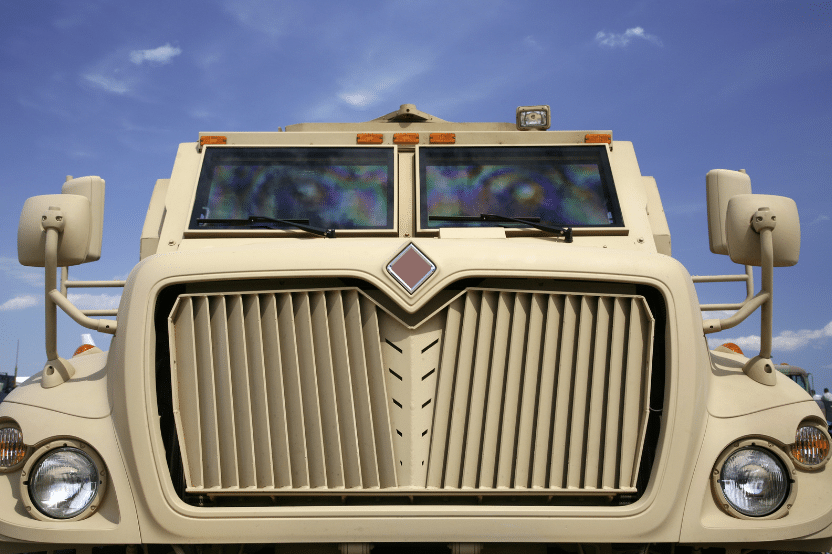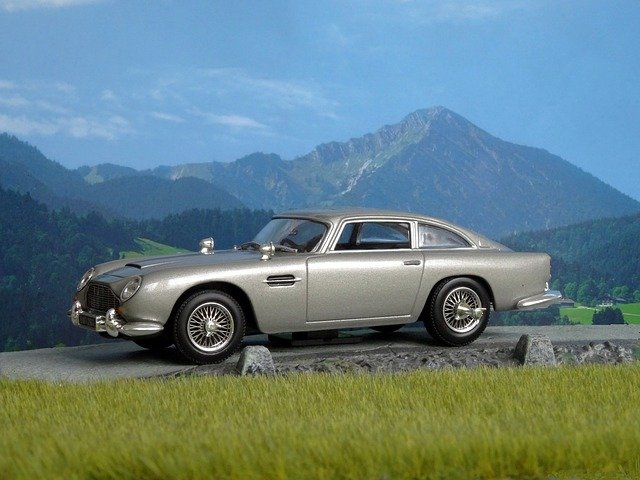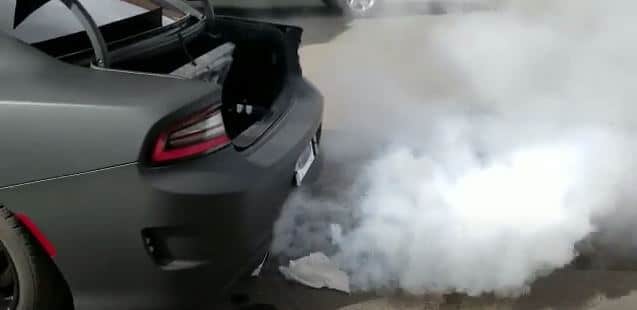MRAP vehicles play a crucial role in providing survivable platforms for soldiers in combat situations by mitigating threats such as IEDs, RPGs, and small arms fire. The Army MRAP fleet consists of the M-ATV and MaxxPro MRAP, both equipped with common commercial and military components designed to withstand underbody mines and explosively formed penetrators.
The MaxxPro MRAP incorporates advanced armoring technology with a V-shaped hull to deflect IED blasts while offering defense against direct fire and RPG rounds. Similarly, BAE Systems’ RG33 series offers advanced mobility, survivability, and mission flexibility.
By understanding the specifications of these vehicles, one can appreciate their significant contribution to enhancing soldier survivability and effectiveness in combat environments.
Size and Dimensions of MRAP Vehicles
MRAP vehicles such as the MaxxPro MRAP and RG33 series possess specific size and dimensions that contribute to their effectiveness and survivability in combat situations. These vehicles are designed to provide a high level of protection for the occupants, while also offering maneuverability and mobility on various terrains.
The MaxxPro MRAP has an overall length of approximately 254 inches, a width of about 102 inches, and a height of around 113 inches. It can accommodate up to six personnel, with seating arrangements designed to enhance comfort and safety.
On the other hand, the RG33 series comes in different configurations, including 4×4 and 6×6 variants. The RG33 6×6 has an overall length of approximately 264 inches, a width of about 105 inches, and a height of around 109 inches. These dimensions allow for optimal troop-carrying capacity and mission flexibility.
Overall, the size and dimensions of these MRAP vehicles play a crucial role in ensuring their effectiveness in providing protection and fulfilling various operational roles.
Weight and Payload Capacity
The weight and payload capacity of the MRAP vehicles are crucial factors in determining their survivability and operational effectiveness in combat environments. These vehicles are designed to withstand threats such as IEDs, RPGs, and small arms fire, making it essential for them to have a sufficient weight to provide adequate protection.
The combat weight of MRAP vehicles typically ranges from 34,000 to 48,000 pounds. This additional weight is necessary to accommodate the extensive armoring and protective features incorporated into the vehicle’s design. In addition to providing protection, the weight of MRAP vehicles also affects their mobility and maneuverability. A heavier vehicle may have limitations in terms of speed and agility compared to lighter counterparts. However, this trade-off is necessary to ensure that the vehicle can effectively withstand attacks from various threats.
The payload capacity of MRAP vehicles refers to the amount of additional equipment or personnel they can carry while maintaining their optimal performance. This capability allows these vehicles not only to protect soldiers but also support various mission roles such as armored ambulance or convoy protection.
Overall, striking a balance between weight and payload capacity is crucial for MRAP vehicles as it directly impacts their survivability, mobility, and operational versatility in challenging combat scenarios.
Speed and Mobility
Speed and mobility play a crucial role in determining the operational effectiveness and tactical maneuverability of modern armored vehicles. In the context of MRAP vehicles, their speed and mobility are essential for responding quickly to threats and maintaining the pace with other combat vehicles.
The MaxxPro MRAP, powered by the International MaxxForce D9.3I6 diesel engine, provides up to 330 HP and 950 lb-ft of torque, enabling it to operate on various terrains. Similarly, the RG33 series vehicles manufactured by BAE Systems offer advanced mobility capabilities.
Both the 4×4 and 6×6 variants of RG33 can be transported by land, rail, sea, and air, allowing them to rapidly deploy in different operational scenarios. These vehicles are designed to navigate hazardous environments while ensuring troop safety through features such as large ballistic windows and rear ramps for quick entry and exit.
Overall, speed and mobility are critical attributes that enhance the effectiveness of MRAP vehicles in fulfilling their mission roles.
Armoring and Protection Features
Armoring and protection features of MRAP vehicles are engineered to withstand a wide range of threats encountered in combat environments, ensuring the safety and survivability of soldiers. These vehicles incorporate the latest design in armoring technology, with a V-shaped hull that deflects IED blasts away from the vehicle. They can also be fitted with add-on armor for additional protection.
MRAP vehicles offer protection against direct fire, RPG rounds, mine blasts, and other emerging threats. The armoring can be customized to meet specific mission requirements. Additionally, these vehicles have blast-resistant seats and transparent armor to enhance crew and passenger survivability. The large volume under armor allows for maximum troop-carrying capacity.
Furthermore, MRAP vehicles have a commonality of parts of more than 90%, resulting in cost savings in acquisition, operations, maintenance, and program management. Overall, the armoring and protection features of MRAP vehicles make them highly valuable assets for soldiers operating in hostile environments.
Communication and Technology Integration of MRAP
Communication and technology integration in MRAP vehicles involves the seamless integration of advanced communication systems and cutting-edge technology to enhance situational awareness, command and control capabilities, and information sharing among military personnel.
MRAP vehicles are equipped with state-of-the-art communication equipment, including radios, satellite communications systems, and data links. These systems enable real-time voice and data communication between vehicle occupants, as well as with other units on the battlefield.
Additionally, MRAP vehicles incorporate advanced technology features such as digital displays, GPS navigation systems, and sensor suites that provide critical information about the vehicle’s surroundings. This allows for better decision-making and improved coordination during operations.
The integration of these communication and technology capabilities ensures that soldiers inside MRAP vehicles can effectively communicate with each other and their higher headquarters while maintaining a high level of situational awareness in complex operational environments.
Why You Need an MRAP Vehicle
MRAP vehicles such as the M-ATV and MaxxPro Family of Vehicles are essential in providing protected mobility and mounted firepower for soldiers in combat situations.
These vehicles are designed to withstand threats like IEDs, RPGs, and small arms fire, offering enhanced survivability and mission flexibility.
With their advanced armoring technology, communication systems, and mobility capabilities, MRAP vehicles significantly contribute to soldier effectiveness in combat environments.
Their size, weight capacity, speed, and integration of technology make them crucial assets in ensuring soldier safety and success on the battlefield.








